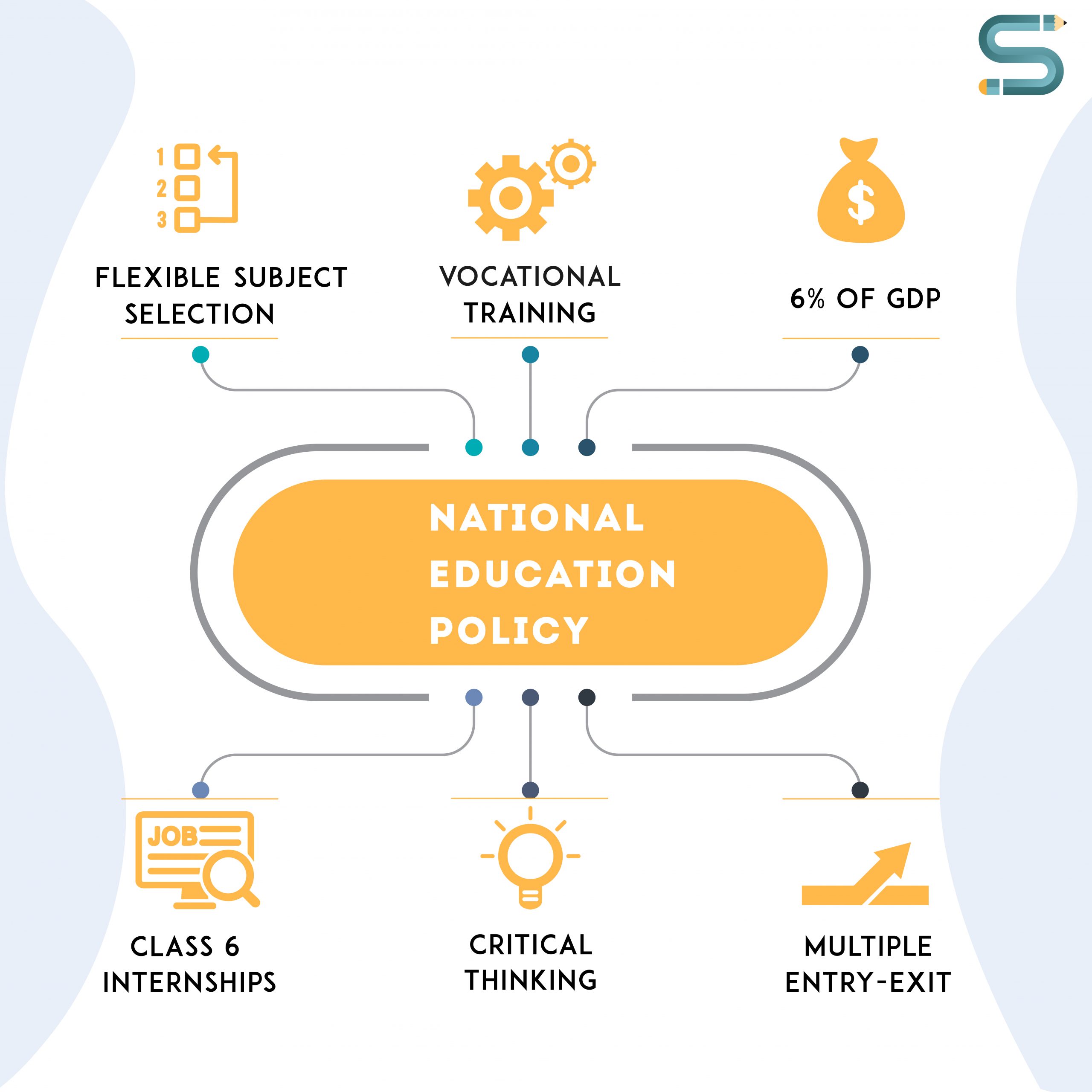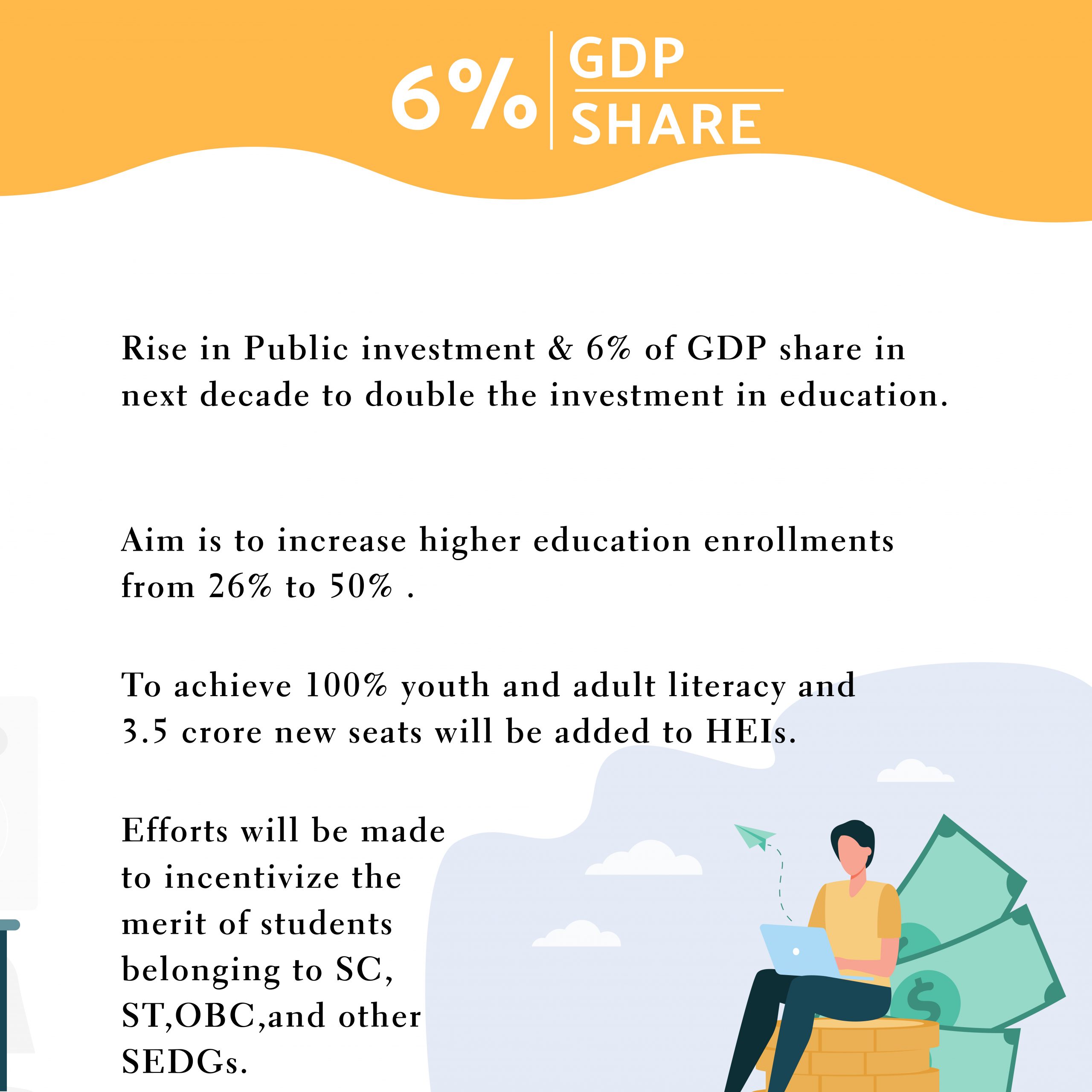“To generalize is to be an idiot.” - William Blake
A new strategy for education policy has long been awaited. The New Education Policy is an active step towards the future of education. It has been tailored to fit the individual perspective rather than weigh all the students using the same scale. It enables the student to be self-reliant- academically, vocationally & even mentally.


To cope up with this educational crisis, a National Mission on Foundational Literacy and Numeracy will be set up by the MHRD on priority along with study material provided on Digital Infrastructure for Knowledge Sharing [DIKSHA].
The third and the most momentous highlight of the policy is the restructuring of the 10+2 school system to 5+3+3+4. Therefore, the structure will be:
3 years in Aaganwadi + 2 years in Preschool = 5 years+ Preparatory Stage (Grades 3 to 5)(3 years)+ Middle Stage (Grades 6 to 8)(3 years)+ Secondary Stage (Grades 9 to 12)(4 years)[5+3+3+4]
This directs the focus towards multidisciplinary learning over rote learning, hence, there will be no distinction based on the subject. The three-language formula will make learning in one’s mother tongue easier (and compulsory till standard V). Children and teachers will be introduced to technology and its integration in education.
The policy reflects concern towards the student dropout rates in higher education. This happens due to over-burdening by the obsolete syllabus and its lack of use in developing daily life skills. The curriculum will, therefore, be reduced and focus on pragmatic learning. There will be a focus on “job readiness” and inculcating an attitude for core research instead of accumulating degrees and diplomas.


The multiple exit-entry options promote stress-free learning which means that the student will be granted a certificate/ diploma or a degree based on the years completed in a degree course. SWAYAM, Shodhgandha, DIKSHA, and many more online platforms are encouraged by this policy to make the dream of 100% literacy come true.
The key highlights of the policy are:


Erasing subject distinction and promoting learning based on the personal interest of the student. (A student learning commerce can also learn music).


Making higher education pocket-friendly through various scholarships, funds, free online resources available to all who are eager to learn.
Ensuring fluency in foundational learning (reading, writing, basic arithmetic) and in incorporating technology as a helpful tool in learning as well as exploring new fields of interest. Promoting a creative pragmatic curriculum.


Encouraging higher educational institutes in incorporating humanities, sciences, technology, language under one roof to be more aware of the rich culture and heritage of the country and the world.
In a nutshell, the implementation time of 10 years seems promising for the posterity of an educational future which caters to their interests and discards rote learning methods.







10 replies on “New Education Policy 2020 – Major Changes in 10 Years”
Informative and crisp.
This really answered my problem, thank you!
Glad to be of help! Stay tuned in for more interesting content.
You should take part in a contest for one of the best blogs on the web. I will recommend this site!
Thank you for your appreciation. your support is what keeps us motivated!
After study a few of the blog posts on your website now, and I truly like your way of blogging. I bookmarked it to my bookmark website list and will be checking back soon. Pls check out my web site as well and let me know what you think.
Thank you, reader! Your honest feedback helps us improve.
very nice post, i certainly love this website, keep on it
Thank you, Reader! We appreciate the honest feedback. Hope we can always be of help.
[…] did see a tremendous change in the education policy with the introduction of policy-cum-concept of NEP 2020. […]